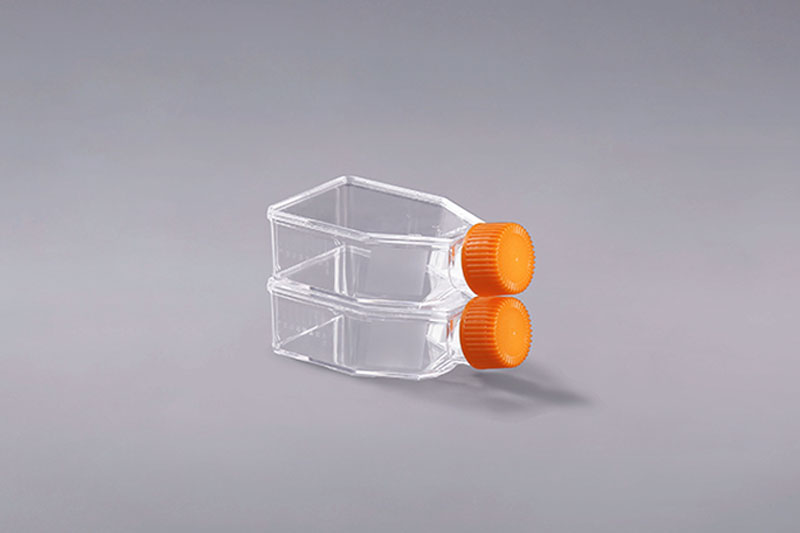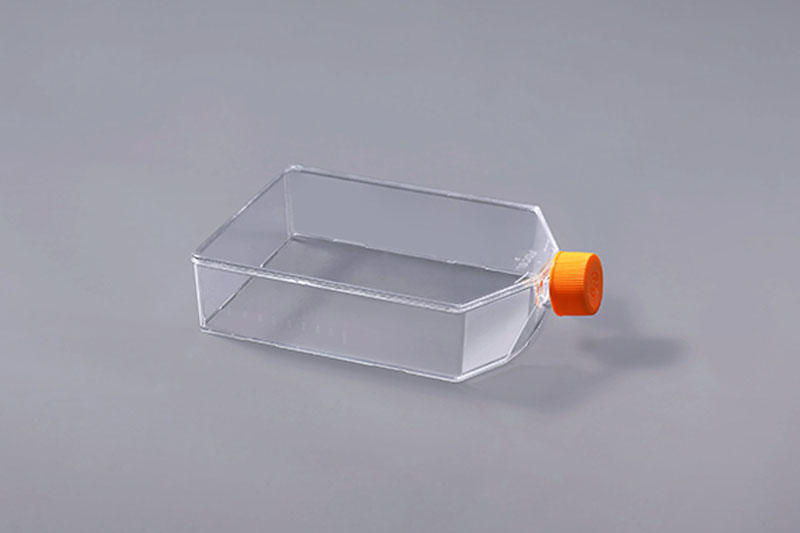With the rapid development of biotechnology, cell therapy has gradually become a new popular therapy, used to treat various diseases such as tumors, organs, organs, scars, wrinkles, skin changes, etc. Cell therapy needs to go through a variety of different processes, in which cell culture flasks are an indispensable tool.
Cell therapy refers to the use of the characteristics of some cells with specific functions, obtained by bioengineering methods and/or processed by in vitro expansion, special culture, etc., to produce specific and powerful cells, and then infused back into the body, so as to achieve the purpose of treating disease. Among them, the most typical and relatively mature is CAR-T therapy.
FuDau T25 Cell Culture Flasks
The process flow of cell therapy products includes plasmid construction, virus construction, cell therapy, etc. Cell culture flasks are mainly used in plasmid expression, cell seed culture, virus transfection and other links. Different specifications from T25cm2 to T225cm2 are available, with a torticollis design, which is convenient for cell scrapers to enter. A frosted writing area is reserved on the neck of the bottle, which is convenient for scientific researchers to record information. According to the different cell culture methods, it is divided into two types: TC-treated surface and non-TC-treated surface to meet the growth needs of different cells.
FuDau T225 Cell Culture Flasks
The cell culture flask has various specifications and is a kind of culture container that is often used when culturing cells. It is also widely used in vaccine preparation, biopharmaceuticals, monoclonal antibodies and other fields.
The FAI climbed 5.9 percent year-on-year in the first 11 months of 2018, quickening from the 5.7-percent growth in Jan-Oct, the National Bureau of Statistics (NBS) said Friday in an online statement.
The key indicator of investment, dubbed a major growth driver, hit the bottom in August and has since started to rebound steadily.
In the face of emerging economic challenges home and abroad, China has stepped up efforts to stabilize investment, in particular rolling out measures to motivate private investors and channel funds into infrastructure.
Friday's data showed private investment, accounting for more than 60 percent of the total FAI, expanded by a brisk 8.7 percent.
NBS spokesperson Mao Shengyong said funds into weak economic links registered rapid increases as investment in environmental protection and agriculture jumped 42 percent and 12.5 percent respectively, much faster than the average.
In breakdown, investment in high-tech and equipment manufacturing remained vigorous with 16.1-percent and 11.6-percent increases respectively in the first 11 months. Infrastructure investment gained 3.7 percent, staying flat. Investment in property development rose 9.7 percent, also unchanged.
 English
English




















































